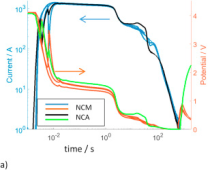I know I'm a bit late to join this discussion, but am hoping for a sanity check on a fuse I want to use.
I need a fuse that is somewhere between my max load of about 130A and the max current rating of my cables, 188A. It could potentially see the full force of a 450Ah 8s LiFePO4, so I think I want a high interrupt rating. Class T fuses below 225A are a real hassle to obtain in Australia, and expensive.
My reading of the specifications seems to indicate this NH fuse will work. I'm a bit unclear whether the "Rated breaking capacity: 120kA" on page 1 of the data sheet applies to DC or just AC. Details for the 160A version are on page 3.
Product page link
Data sheet
I'd really appreciate if anyone can help me decipher the data sheet.
According to the product page specifications, that is an AC fuse, not a DC fuse. Only once in the data sheet does it have a rating for DC, on page one.
In the below product brochure for NH fuses from Eaton it says:
DC applications
Eaton’s Bussmann series NH fuse links can be used on DC applications. In all cases the fuse links can be used at half of their AC rating with a time constant of no more than 10mS. The time constant is the rate of rise of fault current and should be as close to a 50Hz AC half cycle as possible.
If it was me, I would find a fuse specific to DC applications.



